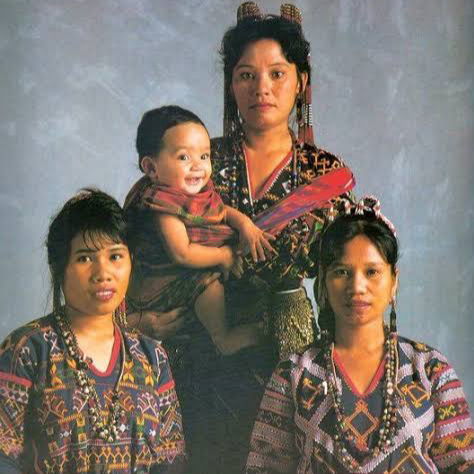Subanun

Identification. The Subanun are pagan shifting cultivators of rice who inhabit the mountainous, forested interior of the Zamboanga Peninsula, a southwestern extension of the island of Mindanao in the southern Philippines. Subanun groups share a similar culture that sets them off from Christian and Muslim lowlanders. This article refers specifically to the Eastern Subanun living in the north-central part of the peninsula.
Location. The Zamboanga Peninsula extends a length of some 300 kilometers from 6°53′ to 8°38′ N and from 121°54′ to 123°53′ E. Were the peninsula a separate island, it would be, with an area of 17,673 square kilometers, the third-largest island in the Philippines, after Luzon and Mindanao. It is divided into four political units, from northeast to southwest: Misamis Occidental, Zamboanga del Norte, Zamboanga del Sur, and Zamboanga City.
Linguistic Affiliation. The Subanun language is comprised of a set of closely related dialects, divided into two groups, Eastern and Western Subanun. The language belongs to the huge, Pacific-wide Austronesian Language Family. Among Austronesian languages it is affiliated most closely with the Central Group of Philippine languages.
Demography. The Subanun probably number about 75,000. Population density is highly variable by region and distance from the coast. A careful census has never been conducted. During the 1970s and 1980s many Subanun groups have suffered depopulation from devastating raids by warring Christian and Muslim bands.
Subanun - History and Cultural Relations
The Subanun first enter recorded history in the accounts of seventeenth-century Spanish Jesuits, who described them as living in scattered settlements with "scant social life." Jesuit attempts to bring the Subanun together into nucleated villages were unsuccessful. Until the time of the American conquest and occupation of the southern Philippines in the years prior to World War I, the major outside relations of the Subanun were with Muslim traders and raiders who came both overland from the east and by sea along the coasts. Muslims settled along the coasts and set up trading centers to collect Subanun forest and agricultural products, as well as slaves, in exchange for Chinese porcelains, gongs, beads, and iron. This trade was highly exploitative and it set the pattern for outsider relations to this day. The Subanun never developed any effective political organization to counter outside exploitation, nor have they attempted to resist it militarily. During the American period, warfare and raiding in the southern Philippines was fairly well suppressed, but since World War II, and especially during the Marcos regime, Christian-Muslim hostilities became increasingly violent. In several areas of the Zamboanga Peninsula, the Subanun have been caught in the cross fire and have been victimized by the marauding bands that flourish under such conditions.
Subanun - Marriage and Family
Marriage. Although polygyny, including sororal polygyny, sometimes occurs, the overwhelming majority of marriages are monogamous. Marriages are generally arranged by families among neighbors and kin. Cousins may marry but are expected to pay a ritual fine that increases with the degree of closeness. A bride-price is paid by the groom's kin, to be distributed among the bride's kin. A period of bride-service in lieu of full bride-price is common. Because of bride-service obligations, a new couple generally lives near the bride's parents. Independent residence in one's own household is the goal of all nuclear families. Informal separation and formally negotiated divorce are common. Bride-price and bride-service obligations, as well as fines for misconduct, can make divorce negotiations difficult, especially between the recently married. Remarriage of the divorced and widowed is the norm. Once married, it is difficult to rejoin one's natal family unit as a dependent member.
Inheritance. Property is divided equally among surviving children. The most valuable property consists of heirlooms in the form of Chinese jars and brass gongs.
Socialization. Child care is relaxed and nonpunitive. It can, however, be a burden on young couples because of the relative isolation of homesteads and the need for both spouses to participate in agricultural work. The biggest problem in child rearing is not discipline
Subanun - Religion
Religious Beliefs. At the core of a culture that enables the Subanun to maintain a meaningful identity distinct from both Catholic Filipino lowlanders and coastal Muslims is a shared system of belief and ritual that is uniquely Subanun. (A number of Subanun speakers have become Catholics and have merged into the lowland population. Others in the Western Subanun area have become Muslim and thereby have been given a new identity by outsiders as "Kalibugan" or "half-breed." American Protestant missionaries have been active in some areas. Their converts have yet another identity.) Sharing the Subanun universe with human mortals are named gods, spirits, demons, and ghosts. These supernatural beings can all help or harm humans—just as humans can, through agricultural activities, for example, cause the beings damage. The agricultural cycle is punctuated with requisite offerings to the supernaturals. Speaking through mediums during séance rituals, the gods and ancestors may demand offerings for the cure of illness. Human enemies can be attacked by luring their mortal souls to a nocturnal offering and then ambushing them at the doorway. This type of indirect assault on the invisible spirit of a distant antagonist is one kind of violence the Subanun do practice. The constituents of offerings vary with the demands of particular supernaturals, but they always include rice, meat, wine, and a betel chew—the essential ingredients of a festive meal. Unlike the agricultural cycle, the stages of the human life cycle, other than birth and death, are not strongly demarcated by rituals. There is no social observance of puberty for either sex.
Bibliography
Christie, E. B. (1909). The Subanuns of Sindangan Bay. Division of Ethnology Publications, no. 6. Manila: Bureau of Science.
Combés, Francisco (1667). Historia del las Islas de Mindanao, Iolo, y sus Adyacentes. Madrid. Reprint. 1897. Madrid: W. E. Retana.
Frake, Charles O. (1980). Language and Cultural Description. Edited by Anwar S. Dil. Stanford, Calif.: Stanford University Press.
Hall, William C. (1987). Aspects of Western Subanon Formal Speech. Dallas, Tex.: Summer Institute of Linguistics.
